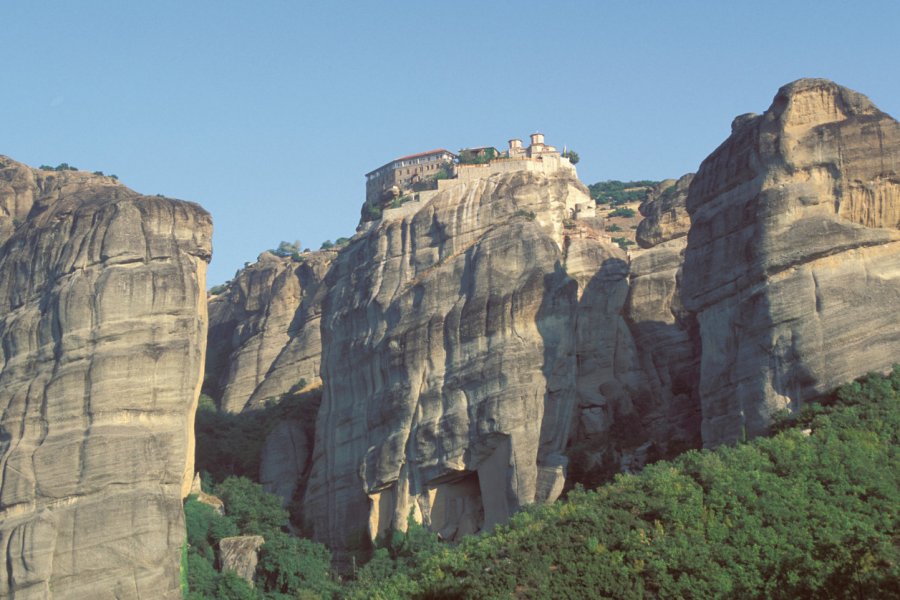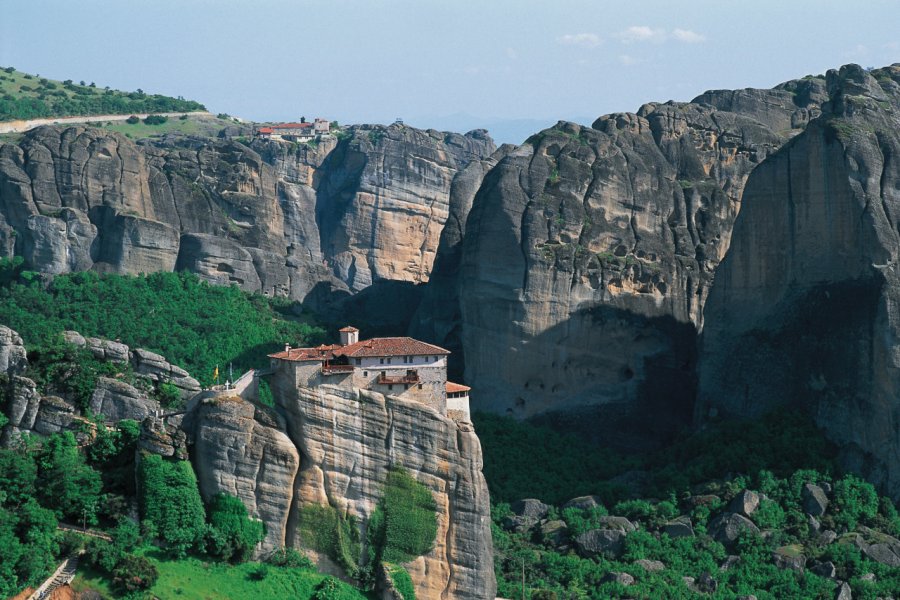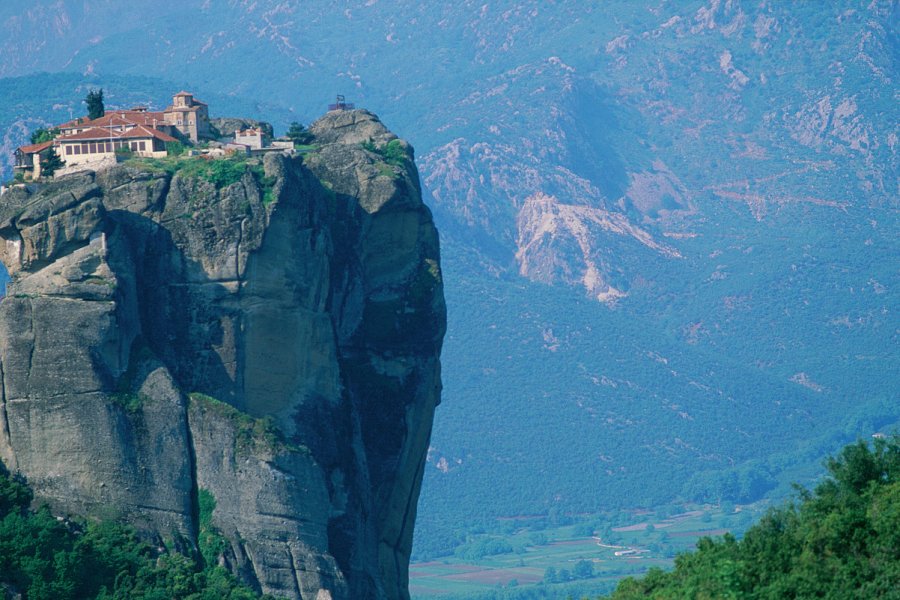Travel Guide Météores
Find an accommodation
Advertising
The monasteries of the Meteors, these sandstone totems, stand like giant columns reaching for some 400 meters in height. Dating back to the time when Thessaly was a closed sea, they are believed to be the result of the presence of a delta at this particular location. Geological curiosity, certainly, but also delight for the eyes: whether one is a believer or not, one cannot be indifferent to the beauty of the Meteors and the serenity that bathes their monasteries, nor can one fail to feel respect towards the hermits who went to climb these rocky masses in the 10th century AD and towards their spiritual descendants, who are now in charge of preserving this impressive cultural and religious heritage. At the origin of all these monasteries, a handful of hermits came to settle down at random from the caves and hollows of the rock to pray in total material detachment. The need for a church inspired them to found the monastery of Doupiani, around the 11th century, marking the beginning of a monastic tradition organized in the Meteora. In 1334, the monk Athanasius and Father Gregory, driven out of Mount Athos by invaders, settled at the top of a promontory where they stayed for ten years. During this period, the idea came to them to create an organized convent like the ones they had seen on Mount Athos. It is the beginning of the construction of the Great Meteor, a founding monastery built on a 613 m high rock bearing the name of Pierre Plate. Today, most of these monasteries are in ruins or have simply disappeared. There are only six left that are still working.
Suggested addresses Météores
Weather at the moment
Advertising
Organize your trip with our partners Météores
Transportation
Book your plane tickets
Car Rental
Boat rental
Accommodation & stays
Find a hotel
Holiday rental
Find your campsite
Tailor-made trip
Immersion travel
Services / On site
Activities & visits
Find a doctor
Météores travel inspiration
Find unique Stay Offers with our Partners
Pictures and images Météores
Other destinations nearby Météores
25 km away







